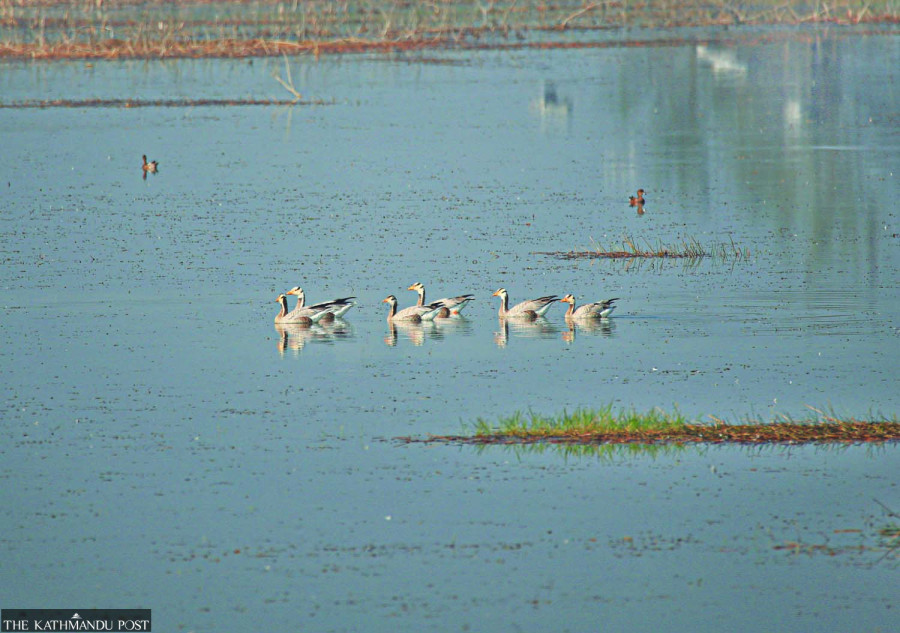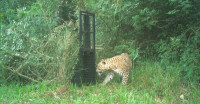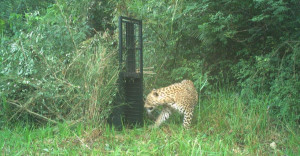Lumbini Province
Three pairs of bar-headed geese sighted in Jagadishpur Bird Sanctuary
Conservationists say the geese arrived in Jagadishpur by flying above Mount Everest, the world’s tallest peak.
Manoj Paudel
Ornithologists and birding enthusiasts are excited as three pairs of bar-headed geese, locally called Khoyahans, have been recorded in Jagadishpur Bird Sanctuary during water bird count this year.
According to conservationists, the geese arrived in Jagadishpur by flying above Mount Everest, the world's tallest peak which lies at an altitude of 8,848.86 metres. A team of ornithologists and technicians led by Hathan Chaudhary sighted the bird species on Tuesday. This winter migratory aquatic bird species flew to Nepal from China.
“The bar-headed geese migrated from cold places having temperatures below freezing point and enjoyed the Jagadishpur lake,” said Chaudhary, a renowned ornithologist who has been observing birds in Jagadishpur over the past one decade. “It shows that the lake area has been a safe haven for various bird species.”
The bar-headed geese (Anser indicus) are known for their incredible high-altitude feats over high Himalaya. They migrate from breeding grounds in central Asia to south Asia as their winter grounds. The bar-headed geese have been recorded flying higher than 9,000 metres.
“A study shows that the bar-headed geese fly at the height of 9,375 metres. They use the same flying route to migrate to Nepal in winter,” said Hemsagar Baral, a senior ornithologist. “The Qinghai lake area is the main habitat of this bird species. They do not find food in the area due to the severe cold. So they migrate to Nepal in winter.”
Bird enthusiasts and scientists of the world have been amazed, wondering how the bar-headed geese can fly above Mount Everest, ornithologists say. Oxygen and temperature are very low in high altitude which causes difficulty in flying for birds.
“But the bar-headed geese can fly at such high altitude. People are amazed upon seeing their migration route above high Himalaya,” said another ornithologist Dinesh Giri. “There is a threat of attack by a golden eagle while flying at an altitude of around 5,000 metres. That could be the reason for flying above 9,000 metres to avert the golden eagle’s attack,” Giri surmised.
Various studies show that constant flight of the bar-headed geese helps to generate body heat which is retained by their feathers. Such heat prevents forming ice on their wings when flying over the high mountain. It is also found that the birds absorb oxygen quicker and more than other birds.
The bar-headed goose has a light grey body, orange legs and a yellow bill. It has a white head and two dark bars. It is around 68 cm to 78 cm in length and weighs about 2 to 3 kg. It is a fascinating bird species for nature lovers.
A couple of bar-headed geese were sighted in Jagadhispur lake for the first time in 2017, according to Baral. “Six birds of the species have been spotted for the second time after eight years,” he said.
Similarly, one each greylag goose and bean goose have been recorded in this year’s bird count in the lake for the second time after the hiatus of eight years.
Meanwhile, knob-billed duck, also known as African comb duck and locally called Nakata, has been recorded in Jagadishpur lake for the first time. According to ornithologist Baral, a knob-billed duck was sighted in the north-east part of the lake. It is one of the indigenous bird species mainly found in Kailali and Kanchanpur districts.
According to conservationists, six species of indigenous breeding ducks are found in Nepal—knob-billed duck (Nakata), lesser whistling-duck (Silsile), cotton pygmy-goose (Harihans), Indian spot-billed duck (Nadun), mallard (Hariyatauke hans) and ruddy shelduck (Chakhewa Chakhewi). Among them, knob-billed duck is the largest of the other five species.
Jagadishpur lake is a major destination of birding in Nepal. The lake, which was listed as a Ramsar wetland site in 2003, was declared a bird sanctuary, the country’s second, in July 2022. The lake is spread over an area of 157 hectares across Kapilvastu Municipality’s wards 9 and 10, and is located some 11 kilometres north of Taulihawa, the district headquarters of Kapilvastu. The lake, constructed for irrigation in the 1970s, provides shelter to 15,000 to 20,000 winter migratory birds each year.




 15.12°C Kathmandu
15.12°C Kathmandu














